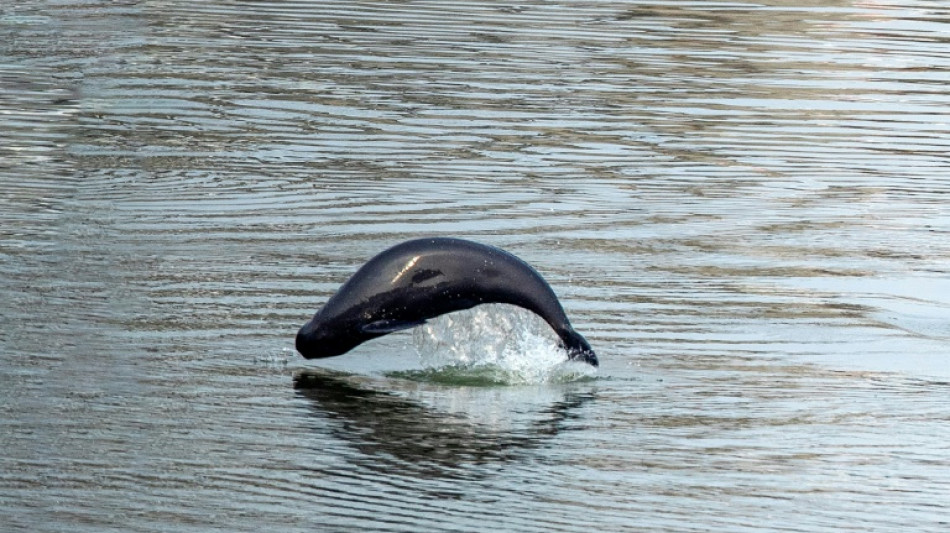
-
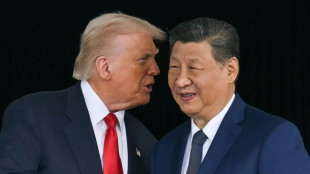 Where things stand on China-US trade after Trump and Xi talk
Where things stand on China-US trade after Trump and Xi talk
-
Sri Lanka targets big fish in anti-corruption push

-
 NY elects leftist mayor on big election night for Democrats
NY elects leftist mayor on big election night for Democrats
-
Injured Jordie Barrett to miss rest of All Blacks tour

-
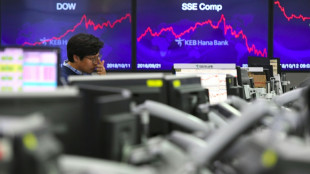 Asian markets tumble as tech bubble fears grow
Asian markets tumble as tech bubble fears grow
-
Pay to protect: Brazil pitches new forest fund at COP30
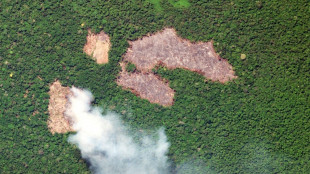
-
 Australia pick 'impressive' Weatherald in first Ashes Test squad
Australia pick 'impressive' Weatherald in first Ashes Test squad
-
Iraq's social media mercenaries dying for Russia

-
 Young leftist Trump foe elected New York mayor
Young leftist Trump foe elected New York mayor
-
Concerns at ILO over expected appointment of close Trump advisor
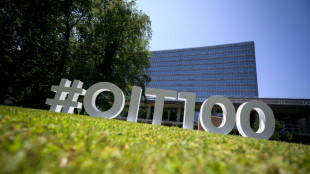
-
 Venus Williams to return to Auckland Classic at the age of 45
Venus Williams to return to Auckland Classic at the age of 45
-
No deal yet on EU climate targets as COP30 looms
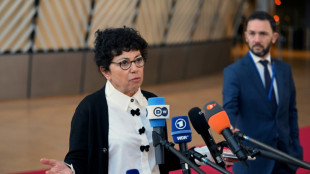
-
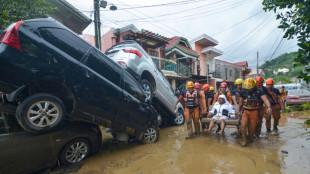 Typhoon death toll climbs to 66 in the Philippines
Typhoon death toll climbs to 66 in the Philippines
-
NATO tests war preparedness on eastern flank facing Russia
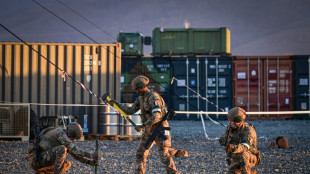
-
 Uncapped opener Weatherald in Australia squad for first Ashes Test
Uncapped opener Weatherald in Australia squad for first Ashes Test
-
Liverpool down Real Madrid in Champions League, Bayern edge PSG

-
 Van Dijk tells Liverpool to keep calm and follow Arsenal's lead
Van Dijk tells Liverpool to keep calm and follow Arsenal's lead
-
PSG left to sweat on injuries to Dembele and Hakimi

-
 Reddit, Kick to be included in Australia's social media ban
Reddit, Kick to be included in Australia's social media ban
-
Ex-Zimbabwe cricket captain Williams treated for 'drug addiction'

-
 Padres ace Darvish to miss 2026 MLB season after surgery
Padres ace Darvish to miss 2026 MLB season after surgery
-
Diaz hero and villain as Bayern beat PSG in Champions League showdown

-
 Liverpool master Real Madrid on Alexander-Arnold's return
Liverpool master Real Madrid on Alexander-Arnold's return
-
Van de Ven back in favour as stunning strike fuels Spurs rout

-
 Juve held by Sporting Lisbon in stalling Champions League campaign
Juve held by Sporting Lisbon in stalling Champions League campaign
-
New lawsuit alleges Spotify allows streaming fraud

-
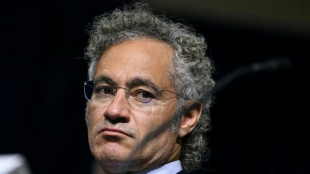 Stocks mostly drop as tech rally fades
Stocks mostly drop as tech rally fades
-
LIV Golf switching to 72-hole format in 2026: official

-
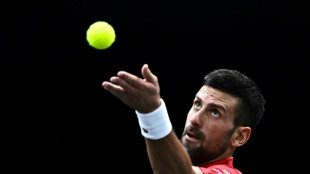 'At home' Djokovic makes winning return in Athens
'At home' Djokovic makes winning return in Athens
-
Manchester City have become 'more beatable', says Dortmund's Gross

-
 Merino brace sends Arsenal past Slavia in Champions League
Merino brace sends Arsenal past Slavia in Champions League
-
Djokovic makes winning return in Athens
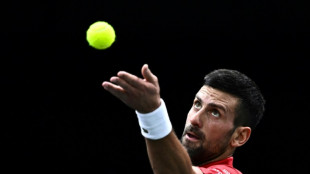
-
 Napoli and Eintracht Frankfurt in Champions League stalemate
Napoli and Eintracht Frankfurt in Champions League stalemate
-
Arsenal's Dowman becomes youngest-ever Champions League player

-
 Cheney shaped US like no other VP. Until he didn't.
Cheney shaped US like no other VP. Until he didn't.
-
Pakistan edge South Africa in tense ODI finish in Faisalabad

-
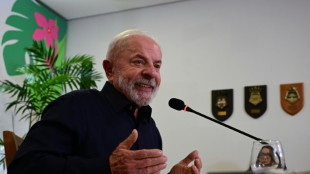 Brazil's Lula urges less talk, more action at COP30 climate meet
Brazil's Lula urges less talk, more action at COP30 climate meet
-
Barca's Lewandowski says his season starting now after injury struggles

-
 Burn urges Newcastle to show their ugly side in Bilbao clash
Burn urges Newcastle to show their ugly side in Bilbao clash
-
French pair released after 3-year Iran jail ordeal

-
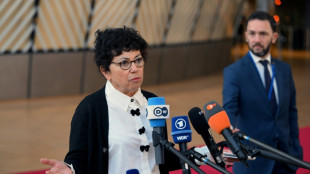 EU scrambles to seal climate targets before COP30
EU scrambles to seal climate targets before COP30
-
Getty Images largely loses lawsuit against UK AI firm

-
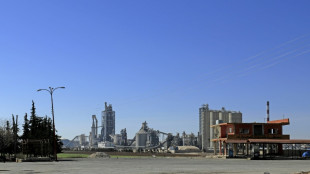 Cement maker Lafarge on trial in France over jihadist funding
Cement maker Lafarge on trial in France over jihadist funding
-
Sculpture of Trump strapped to a cross displayed in Switzerland

-
 Pakistan's Rauf and Indian skipper Yadav punished over Asia Cup behaviour
Pakistan's Rauf and Indian skipper Yadav punished over Asia Cup behaviour
-
Libbok welcomes 'healthy' Springboks fly-half competition

-
 Reeling from earthquakes, Afghans fear coming winter
Reeling from earthquakes, Afghans fear coming winter
-
Ronaldo reveals emotional retirement will come 'soon'

-
 Munich's surfers stunned after famed river wave vanishes
Munich's surfers stunned after famed river wave vanishes
-
Iran commemorates storming of US embassy with missile replicas, fake coffins
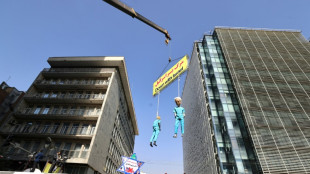

New research shows porpoises not harmed by offshore windfarms
Researchers in Scotland have developed a tool to help ensure porpoises are not being harmed by the construction of offshore wind farms, which are crucial for scaling up renewable energy globally.
The pile driving required to build offshore turbines can harm or even kill noise-sensitive marine mammals like porpoises, sparking concern among environmentalists.
To move them away from the construction sites, acoustic deterrents (ADDs) are often installed underwater: delivering sound at specific frequencies and volumes that temporarily drive the porpoises away.
These devices have been used for years, but it was hard to precisely track how far the porpoises were travelling, and for how long. Without knowing this, no one could be sure if the animals were avoiding harm.
But researchers have improved the technology to track the marine mammals, confirming in fact that they were avoiding injury caused by noise from the turbine building site in the study area.
"It's the first time that we've been able to directly show that the porpoises are swimming directly away from the ADDs... which is what we want," lead author Isla Graham of the University of Aberdeen told AFP.
The findings, published Wednesday in the Royal Society journal, help to assuage fears that building offshore wind farms harm nearby cetaceans, by ensuring that ADDs actually work.
Offshore wind farms are crucial for the green energy transition to limit global warming to 1.5 degrees Celsius, and have the potential to generate massive amounts of energy compared to onshore projects.
"There are obvious climate benefits to the expansion of renewable energy. But that needs to be balanced with the potential impacts that it could have -- negative impacts, positive impacts too," Graham said.
In 2021, of the total wind capacity installed globally, 93 percent was onshore, with the remaining offshore, according to the International Energy Agency.
- 'Seal scarers' -
ADDs, colloquially known as "seal scarers", were initialy designed to keep seals away from fish farms and agricultural sites.
They are commonly deployed during the construction of offshore wind farms, to clear the surrounding site of sound-sensitive animals like porpoises whose hearing can be harmed by noisy pile-driving.
Hearing is very important for porpoises' communication, social interaction and foraging.
Graham said tracking animals driven away by ADD devices can be hard, since it's tough to see animals in the water, especially at night.
But the new tool developed by her team allows for more accurate tracking in real time, using seven underwater sound recorders about a kilometre apart, called a hydrophone cluster, to listen to the porpoises.
The study, conducted in 2019 near the Moray East offshore wind farm in the North Sea off the Scottish Coast, found that about half of the porpoises moved up to 7.5 kilometres (five miles) from the site during the piling.
Graham says the tool could be deployed to other sites where sound-sensitive animals, like bottlenose dolphins, are present.
"As those new tools are developed, our hydrophone cluster could be used again, to look at efficacy of those, depending on on the species," Graham said.
W.Mansour--SF-PST


